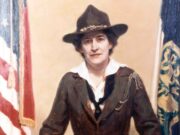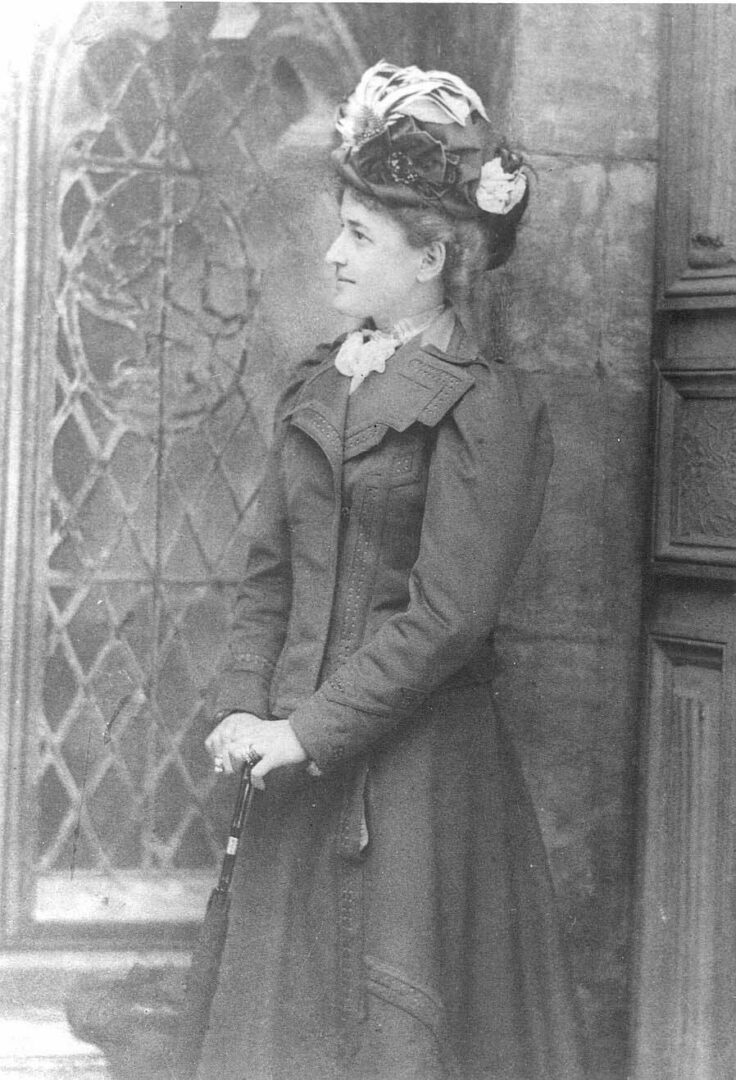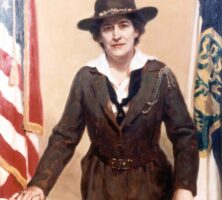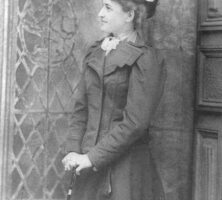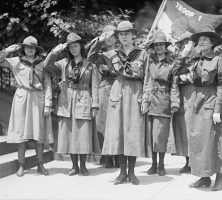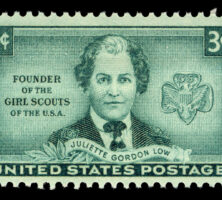Juliette Magill Kinzie Gordon Low was the founder of the Girl Scouts of the United States of America (GSUSA). She was born on October 31, 1860, in Savannah, the second of six children of Eleanor “Nellie” Lytle Kinzie and William Washington Gordon II (the son of promient lawyer and legislator William Washington Gordon). She was named after her maternal grandmother. Shortly after her birth an uncle nicknamed her Daisy, and she used that name throughout her life.
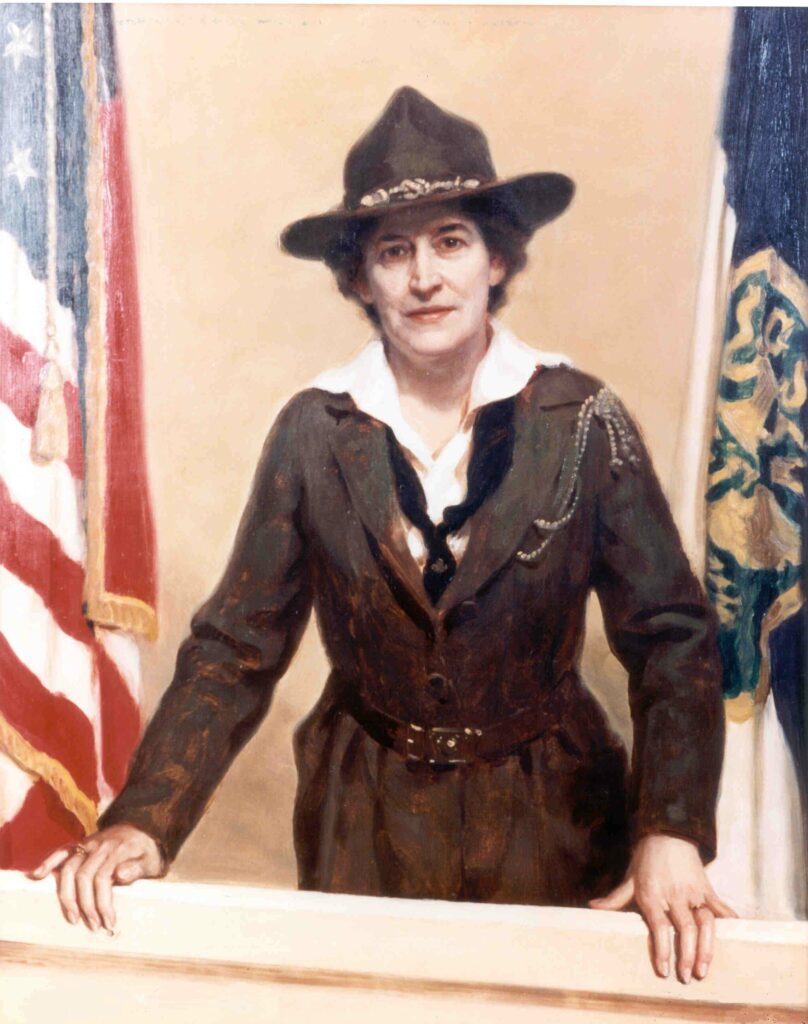
Courtesy of Girl Scouts of the USA
Childhood and Adolescence
Low’s upbringing was typical for daughters of elite families in the post–Civil War (1861-65) South. She started school in Savannah and was later sent to boarding schools in Virginia and New York, where she formed friendships that endured throughout her lifetime. She excelled in art classes, and continued to study art, sketch, paint, and sculpt as an adult.
Low completed her formal education in 1880, made her debut in Savannah society, and spent the next several years traveling, assisting with the care of the two youngest Gordon children, and pursuing her interest in art. In January 1885 she sustained an injury that left her partially deaf; another accident the following year further damaged her hearing. Although she joked about her deafness and refused to curtail her activities because of it, her disability was a source of frustration and contributed to bouts of melancholia and depression that became more frequent as she aged.
Marriage and Widowhood
On December 21, 1886, she married William “Willy” Mackay Low, the only son of Andrew Low, a wealthy British merchant with business interests in Savannah, and his second wife, Georgia native Mary Couper Stiles. The newlyweds set up housekeeping in the Low house on Savannah’s Lafayette Square. They remained there for nearly a year and then moved to England. Shortly thereafter they bought a country estate, Wellesbourne, in Warwickshire, which became their primary residence.
Low adapted easily to the life of the English gentry. She was presented at court, attended and hosted house parties, and traveled extensively. The Lows had no children. As years passed they increasingly spent time apart, and there was evidence of growing unhappiness in their marriage. In 1902 William Low abandoned his wife for another woman and asked for a divorce. Divorce proceedings were under way when he died in 1905. His death created new problems for Low. After their separation he had made a will that bequeathed most of his property to his mistress and left Low with only a small annual allowance. She contested the will and eventually received a settlement that made her a wealthy woman.
Low inherited all of her husband’s property in Georgia, including the house on Lafayette Square; she also maintained a residence in London. She spent several months in Savannah each year and continued to travel extensively, including annual summer vacations in Scotland, frequent visits to relatives and friends in America and Great Britain, occasional trips to Europe, and one tour of India. She enjoyed the company of young people and often invited a niece, nephew, or the child of a friend to accompany her.
The Girl Scouts
In 1911 Low met Sir Robert Baden-Powell, a war hero and the founder of the Boy Scouts. The two shared common interests and quickly became friends. She admired the scouting movement and soon began working with the Girl Guides, the Boy Scouts’ sister organization in Great Britain. With Baden-Powell’s help and encouragement, she made plans to start a similar association for American girls. She returned to Georgia early in 1912 and formed several troops in Savannah in March.
Low previously had tended to embrace new projects enthusiastically, only to abandon them when her interest flagged. Scouting, however, was different; at age fifty-one she had found her life’s work. She devoted the next fifteen years to building the organization, which would become the largest voluntary association for women and girls in the United States. She enlisted friends and family in the cause and traveled throughout the nation recruiting leaders and members. She drafted the Girl Scout laws, supervised the writing of the first handbook in 1913, and provided most of the financial support for the organization during its early years.
By 1925 there were more than 90,000 active Girl Scouts in the United States. The organization owed much of its success to Low, who embodied a unique combination of resources and attributes. Equally at home in Britain and America, she had close ties to scouting’s originator, Baden-Powell, and an extensive network of influential relatives and friends in the United States. She was unencumbered by family responsibilities or the necessity of earning a living. Witty and charming, Low was at ease when she met new people. Above all, she possessed boundless energy, an indomitable will, and an unshakable conviction that scouting would benefit girls and the nation. When Low called on adults to support the fledgling movement, few refused.
Low resigned the presidency of GSUSA in 1920, assuming instead the title of founder. She became increasingly involved in the international association of Girl Scouts and Girl Guides. She realized one of her fondest dreams in May 1926, when the United States hosted an international encampment in New York. Thirty countries were represented; Low personally subsidized the travel expenses of some of the girls from overseas.
By the time of the encampment Low’s health was failing. In 1923 she had been diagnosed with cancer. She concealed her illness from family and friends as long as she could and maintained a busy schedule. She spent the fall of 1926 in England and returned to Savannah a few days after New Year’s. She died at her home on Lafayette Square on January 17, 1927, and was interred next to her parents in Laurel Grove Cemetery. At her request she was buried in her Girl Scout uniform. In her pocket was a telegram that she had received from the national officers of GSUSA shortly before she died. “You are not only the first Girl Scout,” it read, “you are the best Girl Scout of them all.”
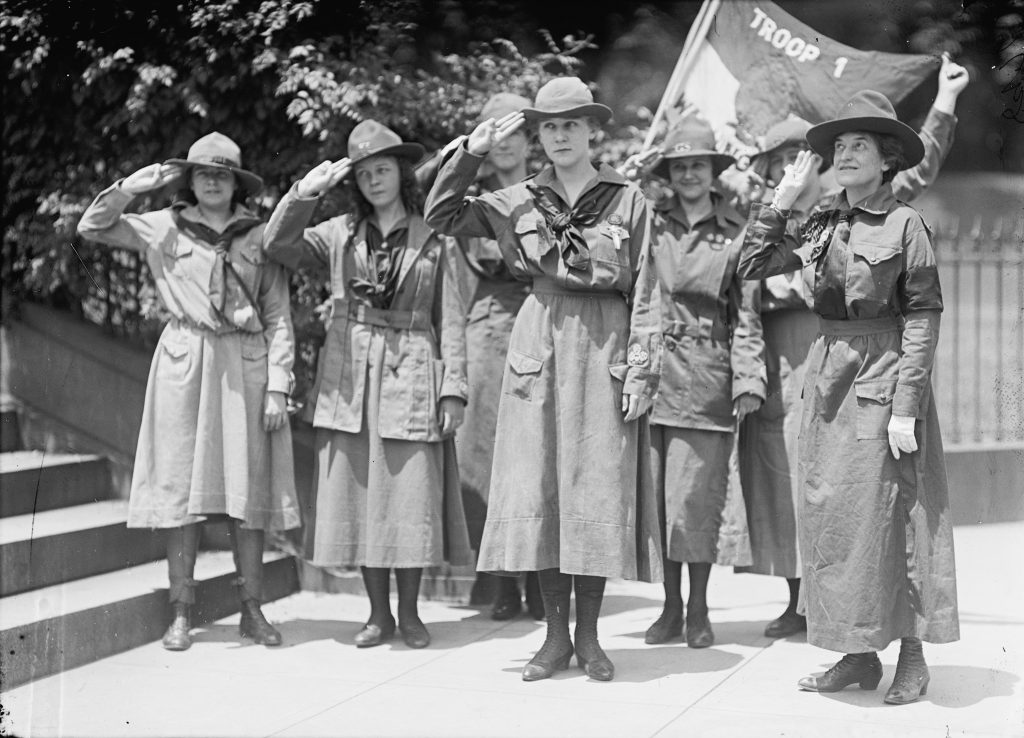
Courtesy of Library of Congress, Prints and Photographs Division
Low was inducted into Georgia Women of Achievement in 1992, and in 2005 she was named an inaugural nominee of the Extra Mile Points of Light Volunteer Pathway, an evolving national monument in Washington, D.C.


